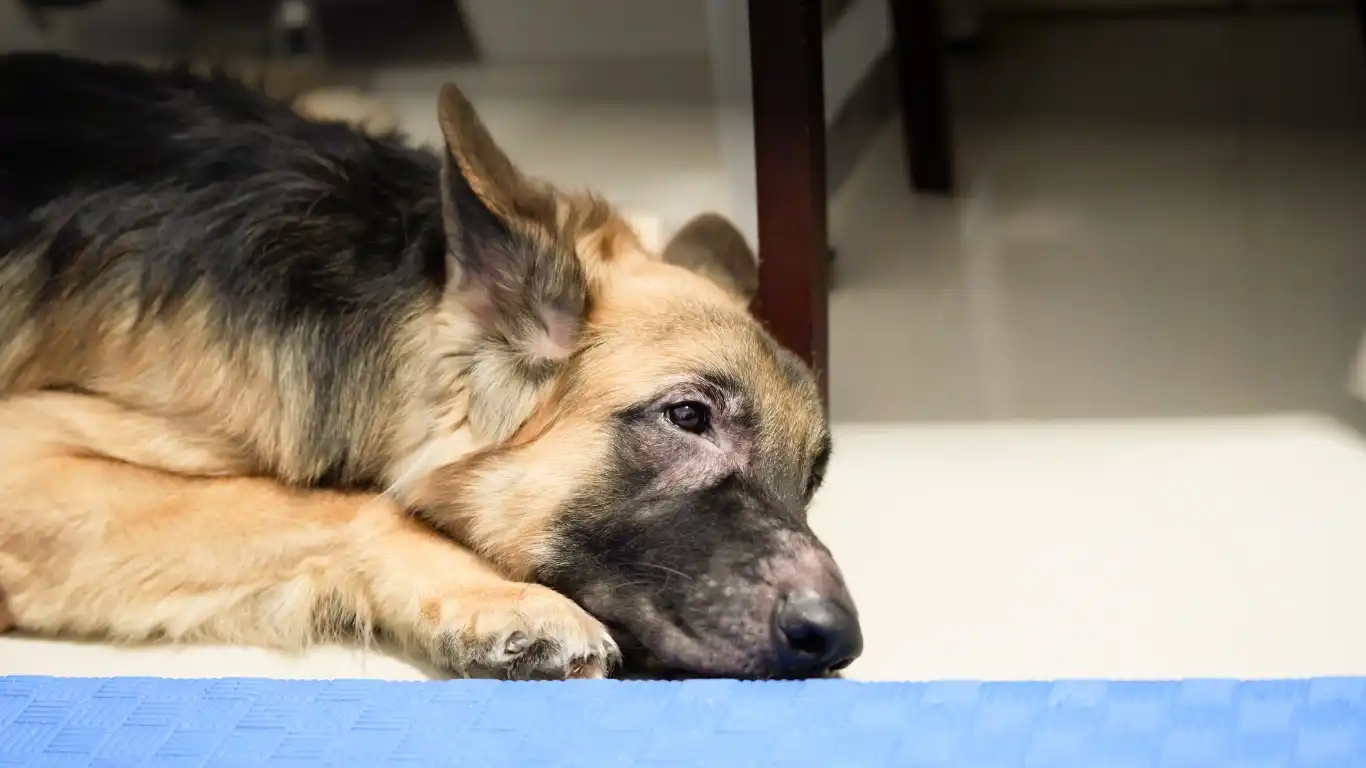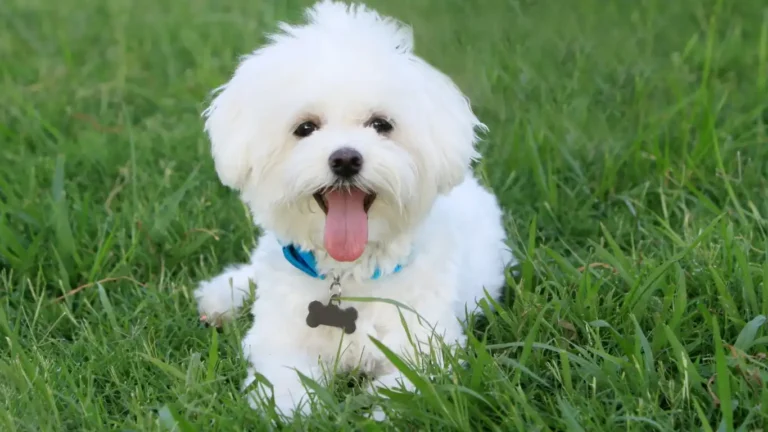How to Recognize Signs of Depression in Dogs – Essential Tips for Concerned Pet Owners
As a Veterinary Technician with a focus on nutrition, I’ve seen a lot of cases where pet owners are concerned about the well-being of their dogs, especially when they exhibit unusual behaviors. One of the most concerning issues can be depression. Dogs, like people, can experience depression, but it often goes unnoticed because the signs are subtle and can be confused with other health issues. In my years of working with animals, I’ve seen firsthand how depression in dogs can manifest in different ways, and it’s crucial for owners to know how to recognize signs of depression in dogs early on. In this article, we’ll talk about how to spot these signs and what steps you can take to help your furry friend.
Understanding Depression in Dogs
Depression in dogs might not be something everyone thinks about, but it’s just as real as it is in humans. Dogs are incredibly emotional creatures, and changes in their environment, routine, or even diet can trigger feelings of sadness or isolation. Just like us, they can get down in the dumps for a variety of reasons. Whether it’s a life event like the loss of a companion, a major change in the household, or even something like a lack of physical activity, it’s important to understand that depression can stem from many sources.

From my experience, one of the first things I tell pet owners is that depression in dogs can be quite similar to what we experience. It’s not just about being “down”—it’s about a noticeable change in behavior that could signal a deeper emotional struggle. Dogs are incredibly attuned to their owners’ emotions, and if they sense a shift in their environment or even in their owner’s mood, they might start to exhibit signs of depression themselves. With that in mind, let’s explore how to recognize signs of depression in dogs and the physical and emotional clues that often go unnoticed.
Key Signs of Depression in Dogs
If you’ve noticed that your dog’s behavior has changed recently, it could be due to depression. Some signs are more obvious than others, but all of them are worth paying attention to. Below are a few key signs that might indicate your dog is feeling down:
- Loss of Interest in Activities: One of the most common signs of depression in dogs is a sudden lack of interest in things they usually love, like playtime or walks. For example, a dog who used to be super enthusiastic about fetching the ball might suddenly turn their nose up at it. This change in behavior can be one of the first red flags that something is off.
- Changes in Appetite: A depressed dog may either lose their appetite completely or eat far more than usual. This can lead to weight loss or weight gain, and it’s an important symptom to monitor. In my practice, I’ve seen dogs lose their appetite when they’re under stress or experiencing sadness, and it’s something to take seriously.
- Excessive Sleeping: Just like humans, dogs may sleep more when they’re feeling depressed. If you notice your dog is sleeping more than usual or seems to have lost their energy, it could be a sign of depression. It’s worth noting that if the sleeping pattern is unusual for your dog’s normal routine, this might be a concern.
- Changes in Behavior Towards People: Dogs who are feeling depressed may become more withdrawn, or on the flip side, they might become overly clingy and seek constant attention. They might isolate themselves in a corner or refuse to interact with family members, which can be a clear sign that something’s wrong.
- Unexplained Aggression: Depression in dogs can sometimes manifest as aggression. A normally calm dog might suddenly start growling, snapping, or showing signs of irritability for no apparent reason. This is often a response to the stress or confusion they are feeling emotionally.
What Causes Depression in Dogs?
Now that we’ve covered some of the signs, let’s talk a little bit about what might cause depression in dogs. The causes of dog depression are not always obvious, but there are a few common triggers that often come into play:
Loss of a Companion
Whether it’s another pet or even a human family member, dogs can grieve the loss of a companion just like we do. In my own experience, I’ve seen many dogs exhibit signs of depression after the death of a fellow pet in the household. They may search for their lost companion, show a lack of interest in their favorite activities, and even become more withdrawn. This type of grief can last for weeks or even months, and it can be incredibly tough on both the dog and the owner.

Change in Routine or Environment
Dogs are creatures of habit, and when there’s a major change in their environment—whether it’s moving to a new home, a change in the family structure, or a shift in daily routines—it can be stressful for them. I’ve had clients come to me with dogs who started acting depressed after a family member moved out or after the family started working longer hours. Dogs thrive on consistency, so any disruption in their routine can make them feel insecure or anxious.
Physical Health Issues
It’s also important to remember that some signs of depression in dogs can be caused by physical health problems. Pain from an injury, illness, or even nutritional deficiencies can cause a dog to seem sad, lethargic, or uninterested in their surroundings. As a vet tech, I always recommend checking in with your vet to rule out any underlying medical issues that might be contributing to your dog’s behavior.
What You Can Do to Help Your Depressed Dog
Recognizing the signs of depression in dogs is the first step, but knowing how to help is just as important. There are a few things you can do to support your dog if they’re feeling down:
- Maintain a Routine: Dogs find comfort in routine. If you’re able to keep their feeding schedule, walks, and playtime consistent, it can help them feel more secure.
- Increase Interaction: Spend extra time with your dog, whether it’s through more playtime or cuddles. Emotional support and positive attention can work wonders in helping your dog feel loved and valued.
- Consult with Your Veterinarian: If your dog’s depression seems prolonged or severe, it’s a good idea to consult your vet. They can help rule out any underlying health issues and may even suggest professional therapy or medication to help your dog.
In the next section, we’ll dive deeper into specific treatment options and how you can help your dog recover from depression. Stay tuned for more insights!
Treatment Options for Depressed Dogs
Now that we’ve covered how to recognize signs of depression in dogs and some common causes, let’s dive into how you can actually help your dog if they are struggling with depression. As a veterinary technician, I’ve worked with many pet owners who were concerned about their dogs’ emotional well-being. The good news is that there are several steps you can take to support your furry friend through a tough time. Each dog is different, and what works for one may not work for another, but the key is patience, love, and understanding.

Provide More Attention and Affection
One of the first things I recommend to owners is to simply spend more time with their dog. Dogs are social animals, and they thrive on interaction with their family members. If your dog is feeling down, try to give them extra love and attention. Whether it’s cuddling on the couch or spending more time playing in the yard, these small acts of affection can help your dog feel supported and less isolated.
In my own experience, I’ve seen how much a little extra attention can make a difference. A dog who’s been withdrawn or uninterested in play can often perk up when they feel secure and loved. Just keep in mind that if your dog has a history of anxiety, it may take some time for them to trust that the world around them is safe again.
Incorporate More Exercise and Mental Stimulation
Another way to help a depressed dog is by incorporating more exercise and mental stimulation into their daily routine. Dogs who are bored or have excess energy may be more likely to feel down. Regular walks, play sessions, and interactive toys can help boost your dog’s mood. I’ve noticed that dogs who are engaged in activities that challenge them—whether it’s fetch, agility training, or puzzle games—often seem happier and more energetic overall.

Additionally, exercise isn’t just good for a dog’s body—it’s great for their mind too. Dogs need both physical and mental stimulation to stay healthy and happy. Even something as simple as a new trick or learning a new skill can work wonders for a dog that’s feeling depressed. When you add something new and exciting to their routine, it can reignite their enthusiasm for life.
Maintaining a Consistent Routine
As I mentioned earlier, dogs are creatures of habit, and one of the best ways to help a depressed dog is by sticking to a consistent routine. When life gets unpredictable or changes significantly, it can make a dog feel unsettled. Keeping your dog’s feeding schedule, playtime, and daily walks as consistent as possible can help them feel more secure. If their routine is all over the place, it could contribute to their emotional struggles.
In my own practice, I’ve had clients who noticed significant improvements in their dog’s mood once they made sure their routine was stable. This doesn’t mean you need to do everything down to the minute, but providing some predictability in your dog’s life will make them feel more at ease. This is especially important if there’s been a major change in their environment, like a move or the loss of a companion. Dogs find comfort in routine, and it can help them adjust to changes in their life.
Medical Treatment Options
Sometimes, the depression your dog is experiencing may be more serious and require medical intervention. It’s always a good idea to consult with your vet if your dog’s depression seems severe, prolonged, or accompanied by other symptoms. As a veterinary technician, I’ve worked with many vets who have successfully treated depressed dogs with the help of medication or behavioral therapy.
Antidepressants and Medications
While medications aren’t always necessary, some dogs benefit from antidepressants. These medications can help regulate mood and anxiety, especially if the dog’s depression is related to a more serious underlying issue, like separation anxiety or chronic stress. I’ve had a few clients whose dogs showed noticeable improvements once they started on prescribed medications. It’s important to note that medication should always be prescribed and monitored by a veterinarian, as it’s essential to find the right dosage and type of medication for each dog.
If you’re considering medications for your dog, be sure to have a thorough conversation with your vet about the potential side effects, the timeline for improvement, and the long-term plan. Medication can be an effective tool, but it’s most successful when combined with behavior modification and environmental changes.
Behavioral Therapy
In addition to medication, behavioral therapy can play a crucial role in helping a depressed dog. Behavioral therapy can help your dog work through the emotional or behavioral issues that may be causing their depression. This can involve working with a professional dog trainer or even a veterinary behaviorist. These experts can help you understand the root cause of your dog’s depression and give you practical strategies to help them feel more secure and confident.
For example, if your dog is experiencing separation anxiety, a professional might suggest gradual desensitization training to help your dog feel more comfortable when you’re away. If there’s an environmental factor contributing to their depression, such as a new pet or family member, behavior modification techniques can help your dog adjust more easily. It’s all about providing the right tools to help your dog feel better and overcome their struggles in a healthy, positive way.

Nutrition and Diet for Mental Health
As a veterinary technician specializing in nutrition, I have to emphasize the importance of diet in maintaining your dog’s overall health, including their mental well-being. Certain nutrients can play a big role in supporting your dog’s mood and emotional stability. For instance, omega-3 fatty acids, found in fish oil, can help improve cognitive function and reduce anxiety. B-vitamins and antioxidants also support brain health and can help dogs manage stress more effectively.
Sometimes, dogs with depression may also experience changes in their appetite. Some may eat less, while others may overeat to compensate for their emotional distress. As a pet owner, it’s important to ensure your dog is getting the right balance of nutrients, even if their appetite is off. A healthy, balanced diet that meets your dog’s specific needs is a crucial part of their recovery from depression.
If you’re concerned about your dog’s diet, consider consulting with your veterinarian or a pet nutritionist to create a personalized feeding plan. In some cases, specific supplements or a change in food may be necessary to support your dog’s recovery process.
Alternative Treatments for Dog Depression
While traditional methods like medications, therapy, and diet changes can be incredibly effective, some pet owners prefer to explore alternative treatments for their dogs. As a veterinary technician, I’ve had clients ask about natural or holistic options to help manage their dog’s depression, and I completely understand the desire to try everything possible to make their dog feel better. There are several alternatives that may complement conventional treatments or even be a great fit for some dogs. However, it’s always important to discuss these treatments with your vet before trying them out to make sure they’re safe and appropriate for your dog’s specific needs.

Herbal Supplements
Herbal supplements have gained popularity in recent years for treating anxiety, depression, and other emotional issues in dogs. Some herbs, such as St. John’s Wort and valerian root, have natural calming effects and are commonly used to treat mild cases of depression or anxiety in pets. I’ve seen a few clients find success with these supplements, especially when combined with other behavioral modifications or medical treatments.
It’s important to remember that not all herbal remedies are safe for dogs, so you should always consult with your veterinarian before trying anything new. Some herbs can interact with other medications or cause negative side effects if not administered properly. That said, when used correctly, natural supplements can be a wonderful option for supporting your dog’s emotional well-being in a gentle, holistic way.
Acupuncture
Acupuncture is another alternative treatment that’s become more popular for pets. Many dogs who experience depression or anxiety find relief through acupuncture. The process involves inserting very fine needles into specific points on the body, which can help balance the dog’s energy and alleviate stress. I’ve personally seen dogs become more relaxed and less anxious after acupuncture treatments, and it’s something to consider if you’re looking for a non-invasive option for your pet.
However, like with all alternative treatments, acupuncture should be performed by a licensed practitioner with experience in animal care. Your veterinarian may be able to recommend a certified pet acupuncturist or holistic veterinarian who can guide you through the process safely.
Massage and Physical Therapy
Massage therapy is another wonderful way to help a dog feel more relaxed and comfortable. It’s a great way to relieve tension, improve circulation, and promote overall well-being. Dogs suffering from depression or anxiety often carry tension in their muscles, which can make them feel even more stressed or uncomfortable. Regular massage can provide physical relief and also help calm their mind, promoting a sense of peace.
If you’re not trained in massage techniques, there are many professional pet massage therapists who can provide the treatment your dog needs. Even gentle, at-home massage, such as rubbing your dog’s back or paws, can make a big difference. If your dog seems particularly anxious or restless, incorporating massage into their daily routine might be exactly what they need to feel better.
Preventing Depression in Dogs
While it’s important to know how to treat depression in dogs, prevention is always better than a cure. As a veterinary technician, I often talk to pet owners about how to proactively keep their dog’s mental health in check. Just like in humans, dogs can experience stress and anxiety, but there are steps you can take to reduce the likelihood of depression happening in the first place.
Consistency is Key
As we’ve discussed, dogs thrive on consistency. If you can maintain a predictable routine and environment, you’re already doing a lot to help your dog stay emotionally balanced. A consistent feeding schedule, regular exercise, and ample time for bonding with you are all vital components of a healthy routine. Dogs who know what to expect are generally more secure and less likely to feel anxious or depressed.
Positive Reinforcement Training
Training your dog with positive reinforcement can help build their confidence and reduce stress. Dogs that don’t know how to navigate their environment or who feel unsure of themselves can become anxious, which can lead to depression. By teaching your dog new skills and rewarding them for their good behavior, you’re helping them feel more secure and emotionally stable.
Training can also serve as a great mental workout for your dog. Teaching them basic commands or fun tricks can engage their mind, help them build trust with you, and give them a sense of accomplishment. When dogs feel confident and capable, they’re less likely to struggle with emotional issues like depression.
Provide Mental and Physical Enrichment
Incorporating mental and physical stimulation into your dog’s daily life is crucial for their mental health. Boredom can lead to depression, so it’s important to provide enough activities that will keep your dog entertained and engaged. Activities like interactive toys, agility training, or even simple puzzles can help challenge your dog’s mind and give them a sense of purpose.

It’s not just about physical exercise, either. Mental enrichment, such as teaching your dog new tricks, using food-dispensing toys, or creating scent-based games, can keep their brain engaged and prevent them from getting into a depressive state. Dogs, like humans, need variety and challenge to stay happy and mentally healthy, so the more you can offer in terms of stimulation, the better.
References
Here are some trusted sources to learn more about dog depression, its causes, and how to treat it:
- PetMD – Your trusted pet health resource
- American Kennel Club – Dog breed and behavior information
- National Institutes of Health – Mental health and wellness
- Health.com – General health information
Disclaimer
While this article provides valuable information, it is not intended to replace professional veterinary advice. Always consult with your veterinarian if you have concerns about your dog’s health, particularly if your dog’s depression seems severe or prolonged. Each dog is unique, and the most effective treatment plan will depend on the specific needs of your pet. If you’re unsure whether alternative treatments are right for your dog, your vet can guide you toward the best options for their individual case.






